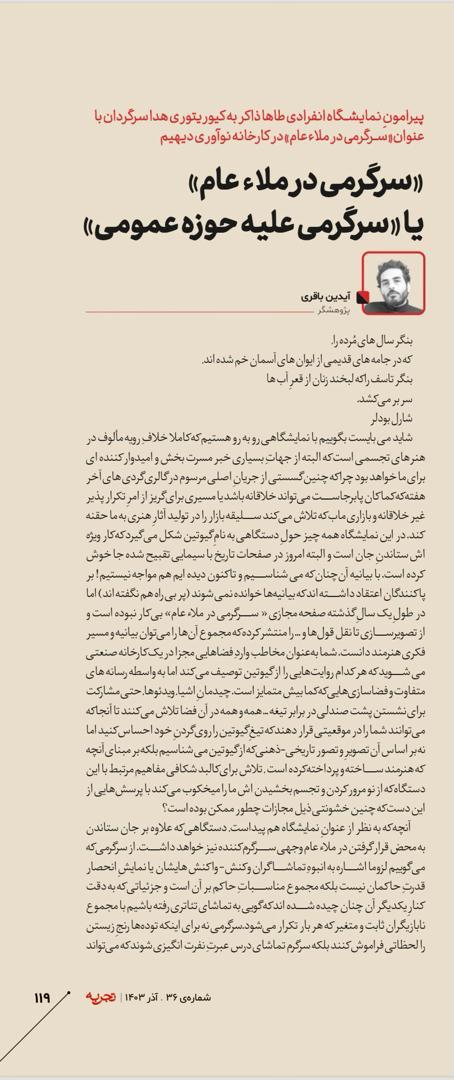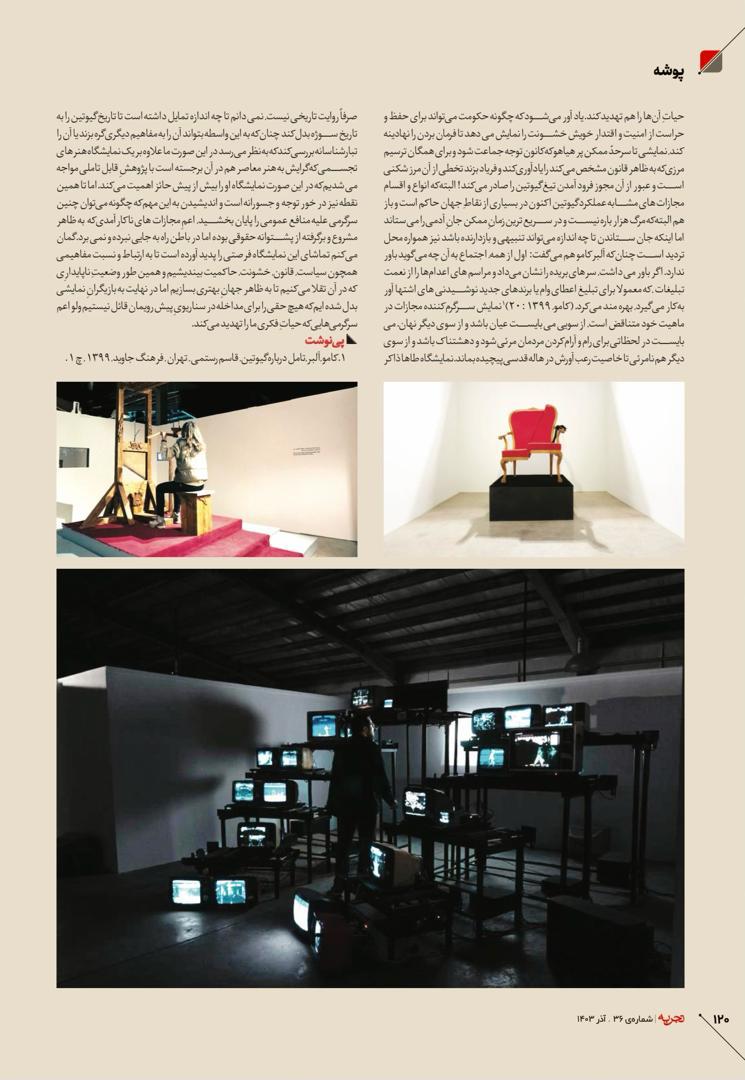“Behold the years long dead,
Leaning from the heavens in ancient garb.
Behold regret,
Rising with a smile from the depths of the waters.”
— Charles Baudelaire
Perhaps we should begin by acknowledging that this exhibition stands in complete opposition to the familiar trajectory of visual arts—a fact that, in many ways, is both promising and encouraging. This deviation from the conventional weekend gallery visits, which persist as a dominant trend, offers either a space for genuine creative rupture or an escape from the monotonous, commercialized repetition that attempts to dictate market-driven artistic tastes.
At the center of this exhibition lies a singular object: the guillotine, a device whose sole function is the taking of life—an instrument that today resides in the annals of history, forever marked by condemnation.
Yet, the exhibition does not unfold through a traditional manifesto, nor does it offer a declaration of intent in the way we have come to expect. The curators believe that manifestos go unread (and they are not entirely wrong), but over the past year, the exhibition’s digital presence, “Entertainment in Public,” has been anything but inactive—from illustrations to quotations and beyond, creating an ongoing dialogue that could itself be considered the artist’s statement and intellectual trajectory.
As an audience member, you enter separate sections of an industrial factory, each narrating different aspects of the guillotine—not through conventional storytelling, but through diverse media and distinct spatial arrangements.
From object installations and video works to participatory experiences like sitting before the blade—every element of the exhibition is designed to place you in a visceral confrontation with the guillotine, not merely through the historical imagery ingrained in our collective memory, but through the artist’s own reconstructed vision.
This dissection of the guillotine’s associated concepts, its re-examination and re-imagining, leaves us frozen in place, forcing us to ask:
How was such violence possible under the guise of justice?
The very title of the exhibition suggests this paradox—an instrument that, beyond its function of execution, takes on an element of entertainment when placed in the public sphere.
By entertainment, we are not merely referring to the crowds gathered to witness the power spectacle of rulers, but to the intricate system of relations that orchestrate the event.
Everything is so meticulously arranged, so deliberately composed—almost as if we are watching a staged theatrical production, complete with a cast of fixed and variable non-actors performing their parts in a ritual of perpetual repetition.
This is not entertainment in the sense of momentary relief from the burdens of life.
Rather, it is an entertainment of discipline—a lesson in fear, an ominous warning that one’s own existence is equally precarious.
It is a reminder of how the state, in its quest for security and authority, stages violence as a spectacle, institutionalizing obedience through terror.
A performance so grand, so clamorous, that it demands the collective gaze of the masses, engraving upon their minds the apparent boundaries of law—borders that, once transgressed, grant immediate license for the blade to fall.


Of course, variations of such punishment persist across the world today—the guillotine’s function may no longer be literal, but its underlying logic endures.
Yes, the guillotine does not enact a thousand deaths—it ends life in an instant—yet the question remains:
To what extent can execution serve as punishment or deterrence?
This very doubt is echoed by Albert Camus, who wrote:
“First and foremost, society does not truly believe in what it claims.
If it did, it would put severed heads on display and give executions the same kind of publicity it grants to mortgage offers and new brands of aperitifs.”
(Camus, 1399: 20)
The Contradiction of Punishment as Spectacle
The theatricality of punishment is inherently paradoxical—it must be both seen and unseen.
At certain moments, it must become visible, terrifying, serving to pacify and control the populace.
Yet, at other times, it must be shrouded in secrecy, enveloped in a sacred aura of terror.
Taha Zaker’s exhibition is not merely a historical account.
It is unclear to what extent he intended to transform the history of the guillotine into a history of the subject—whether to tie it to broader conceptual frameworks or to trace its genealogy.
Had it been the latter, we would not only be witnessing a contemporary visual art exhibition, but also a deeply compelling research project, which would elevate the exhibition’s significance even further.
Even as it stands, however, the exhibition is bold and thought-provoking, demanding that we reflect on how such forms of entertainment—fundamentally opposed to the public good—can be brought to an end.
How do we abolish the ineffective punishments that, despite their apparent legal legitimacy, ultimately lead nowhere?
Perhaps viewing this exhibition opens a space to reconsider the entanglement of concepts such as politics, law, violence, and governance.
It reminds us of the precarious condition in which we struggle to construct a better world, only to find ourselves reduced to mere actors in a spectacle over which we have no control.
A spectacle in which the illusion of choice masks our inability to intervene in the script unfolding before us—
Even as forms of entertainment continue to threaten our intellectual and existential integrity.
Aidin Bagheri
Published in Issue 36 of Tajrobeh Magazine, December 2024